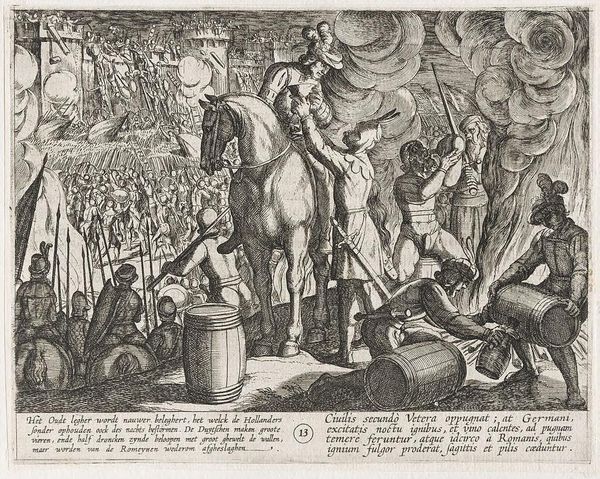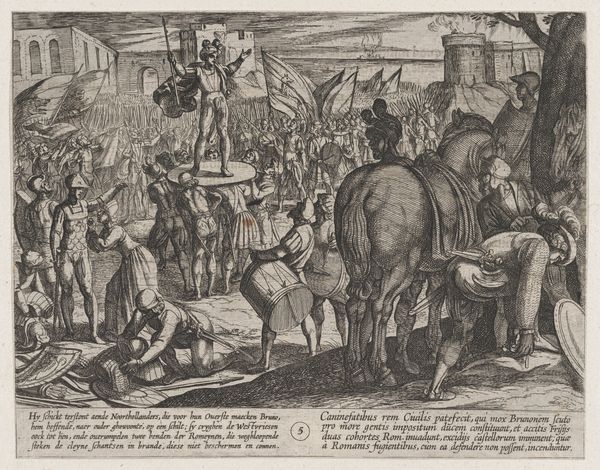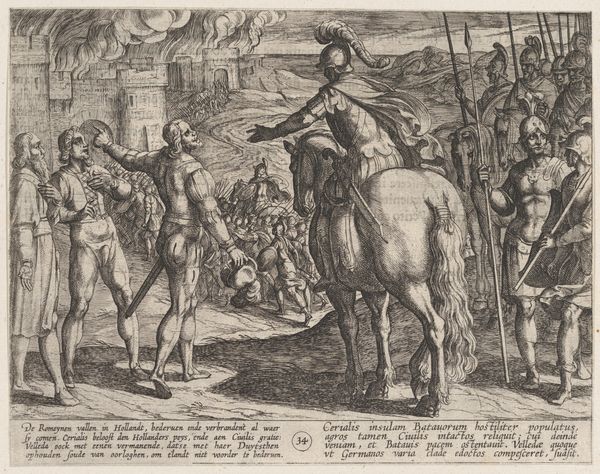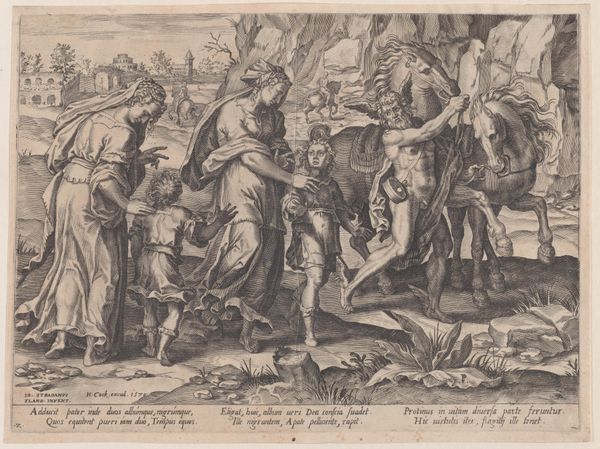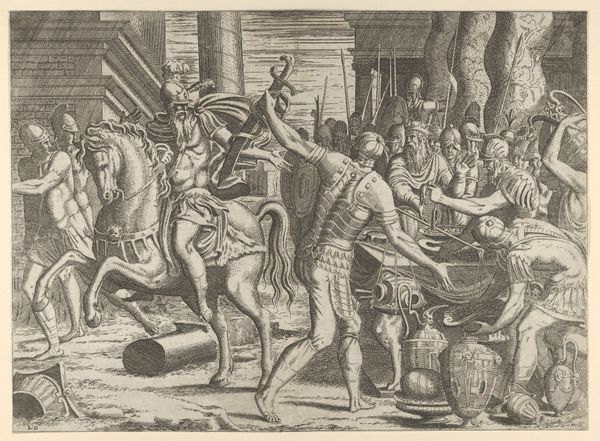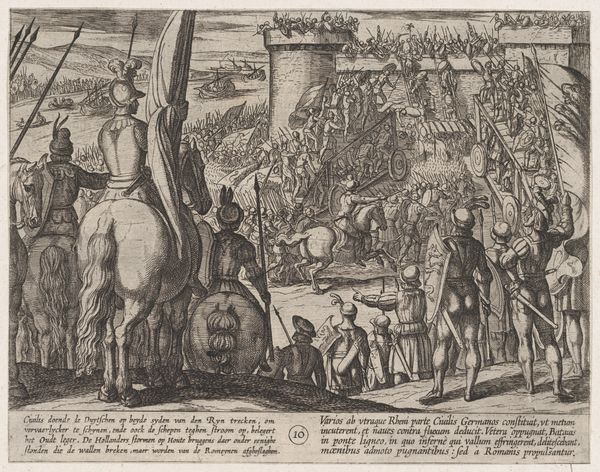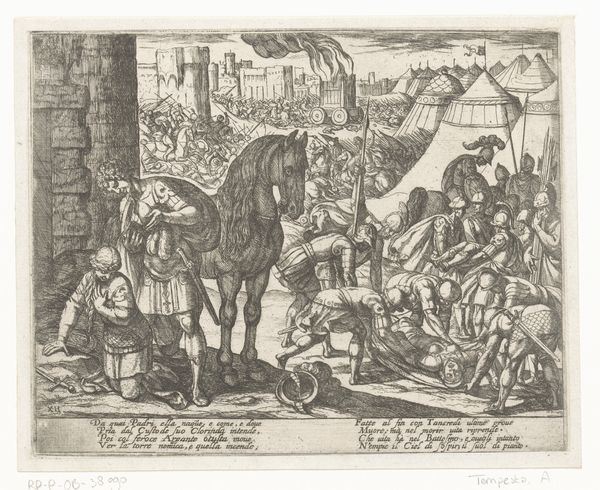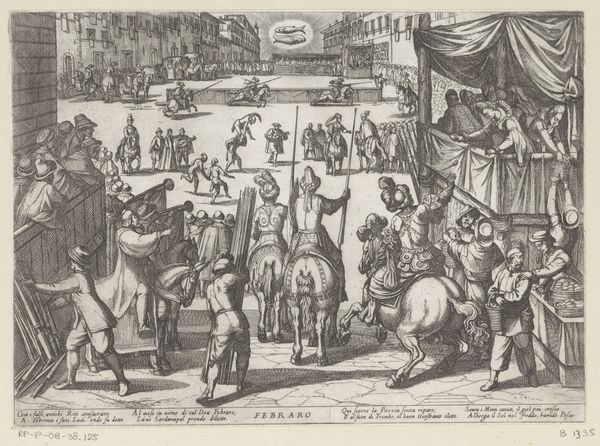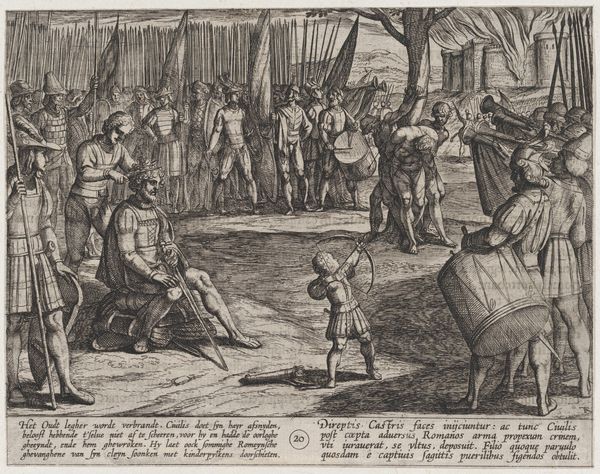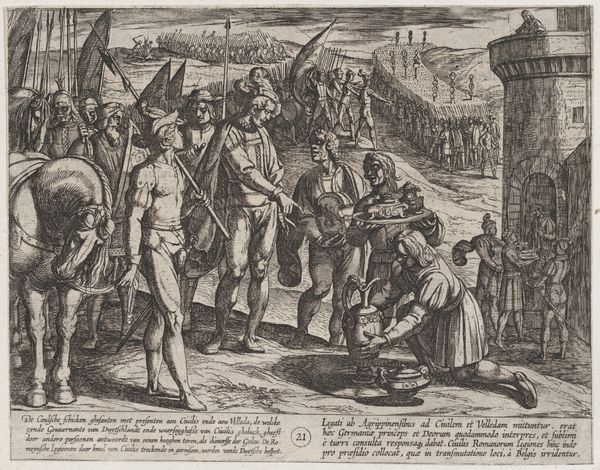
Plate 13: Attack on the Roman Fortress at Night, from The War of the Romans Against the Batavians (Romanorvm et Batavorvm societas) 1611 - 1612
0:00
0:00
drawing, print, engraving
#
drawing
#
narrative-art
#
baroque
# print
#
war
#
soldier
#
horse
#
history-painting
#
engraving
Dimensions: Sheet: 6 5/16 × 8 1/16 in. (16.1 × 20.5 cm)
Copyright: Public Domain
Editor: Here we have Antonio Tempesta’s “Attack on the Roman Fortress at Night,” created between 1611 and 1612. It’s an engraving, full of frantic energy. What really jumps out is the chaos and violence, but it makes me wonder what story Tempesta is trying to tell here. How do you interpret this work? Curator: The narrative unfolds within a specific historical context: the revolt of the Batavians against Roman rule. Tempesta isn't just depicting a battle; he's engaging with the power dynamics between colonizer and colonized, even if from a distant point. How does seeing the "losers" positioned in a favorable light shift our understanding of similar works that portray Roman triumphalism? Editor: That’s a great question! I guess I never really thought about whose perspective was being presented, or how these historical events were shaped by artists' or patrons' political viewpoints. The figures are incredibly dynamic and violent but it lacks detail, are there sociopolitical factors at play that informed Tempesta’s process? Curator: Yes, prints at this time circulated widely and quickly. Tempesta had to convey a political message using potent images of identity and freedom without being too bogged down in nuance or excessive production time. Consider, for example, the strategic deployment of light and shadow to emphasize particular figures and actions – can this visual tactic also be viewed as a symbolic representation of power and resistance? Editor: I see that now, the darkness really amplifies the tension. The Batavians, emboldened, almost seem to rise out of this sea of chaos, fighting to overcome the stronghold. It feels… relevant. Curator: Exactly! By examining this seemingly straightforward historical battle, we can engage with contemporary dialogues about colonialism, resistance, and the ways in which artists grapple with issues of power and identity. Editor: This has totally transformed how I see historical art. I am no longer only seeing a depiction of an event, but now understand that historical depictions can challenge dominant narratives. Curator: Precisely. There's always a dialogue to be had between the artwork, its historical moment, and our present.
Comments
No comments
Be the first to comment and join the conversation on the ultimate creative platform.
